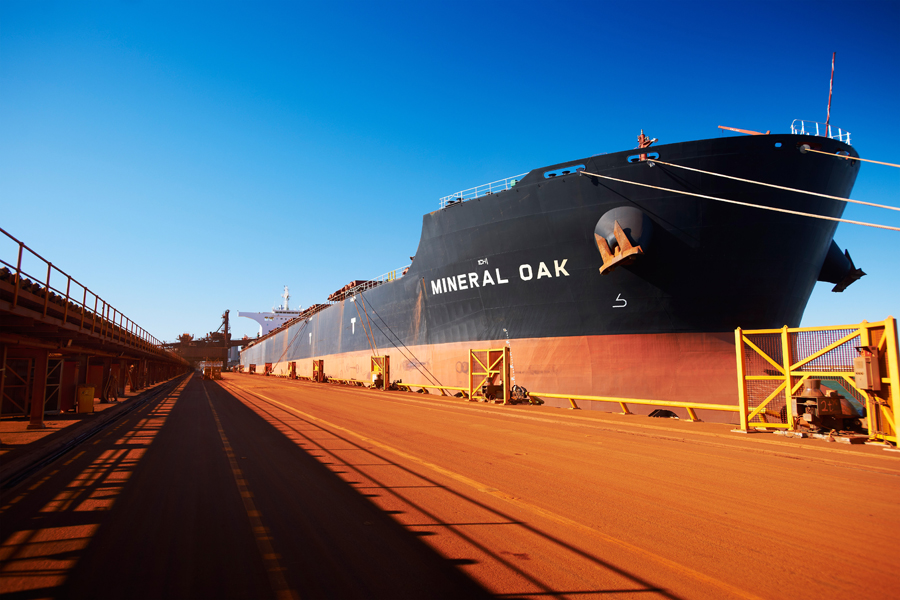
On Thursday the Northern China benchmark iron ore price fell 2.5% to $59.50 per dry metric tonne (62% Fe CFR Tianjin port) according to data supplied by The Steel Index bringing losses so far this week to 8.7% as commodity investment fever among Chinese speculators begin to cool.
Two weeks ago iron ore hit a 16-month high following an 11% jump over just two trading days amid frenzied trading on the Dalian Commodities Exchange where the world’s most active iron ore price futures are traded.
“Some people can see a bit of an uptick, and I don’t know whether it’s hope. You have to look at fundamentals”
On Tuesday, Dalian iron ore futures closed 5.3% lower at 412.50 yuan or $63.35 a tonne after earlier in the day triggering so-called circuit breakers to curb excessive price movement for the umpteenth time in recent weeks. Volume on the day was a robust 217 million tonnes worth $7 billion, but things have quietened down from torrid levels in March and April when one billion tonnes in a single day was recorded.
The more subdued trading is the result of a clampdown on rogue traders, higher margin requirements and trading fees, but volumes are up five-fold compared to last year.
Speaking to reporters in Australia on Thursday outgoing Rio Tinto CEO Sam Walsh, who for years headed up the Melbourne-based miners iron ore division, said the huge quantities of iron ore being traded in Dalian were impacting “people’s view of iron ore pricing” reports the FT:

“Iron ore bounced up to $70 a tonne and I said I didn’t expect it to stay there … guess what — today it’s down at $60. Some people can see a bit of an uptick, and I don’t [know] whether it’s hope. You have to look at fundamentals.”
Bloomberg reports Rio on Wednesday re-iterated the company’s commitment to produce 360 million tonnes on annual basis and Walsh repeated his warnings about oversupply in the market:
“There is additional supply coming on, Vale are bringing on more supply, Roy Hill is bringing on more supply, FMG seems to be increasing their volumes. Those will have an impact on supply and demand.”
The giant mine with annual capacity of more than 90 million tonnes is 85% complete and is expected to start shipping in the second half of 2016
The big three – Vale, Rio Tinto and BHP Billiton – last month lowered future production guidance, but the aggregate 35 million tonnes in possible lost production hardly changes the supply picture and the giants would still hit actual annual output records even at these lowered levels.
Citigroup’s analysts expect around an additional 75 million tonnes of iron ore this year to be shipped out of Australia, more than a third of which would come from Roy Hill. The Gina Rinehart mine has brought forward ramp-up plans and now expects to be producing at full annualized capacity of 55 million tonnes by the end of this year. Later this year, Rio’s board is likely to give the go-ahead to build Silvergrass which would add another 20 million tonnes of high-grade, low cost ore to the company’s Pilbara output.
The investment bank also forecasts 16 million tonnes of new iron ore supply from Brazil this year. And that’s even before Vale’s flagship S11D project and new railway and port infrastructure in the Carajas complex comes on stream. The world’s top producer said the giant mine with annual capacity of more than 90 million tonnes is 85% complete and is expected to start shipping in the second half of 2016.
Despite recent gyrations the steelmaking raw material has managed to hold onto nearly 40% gains in 2016 and a 60% recovery from nine-year lows reached mid-December.